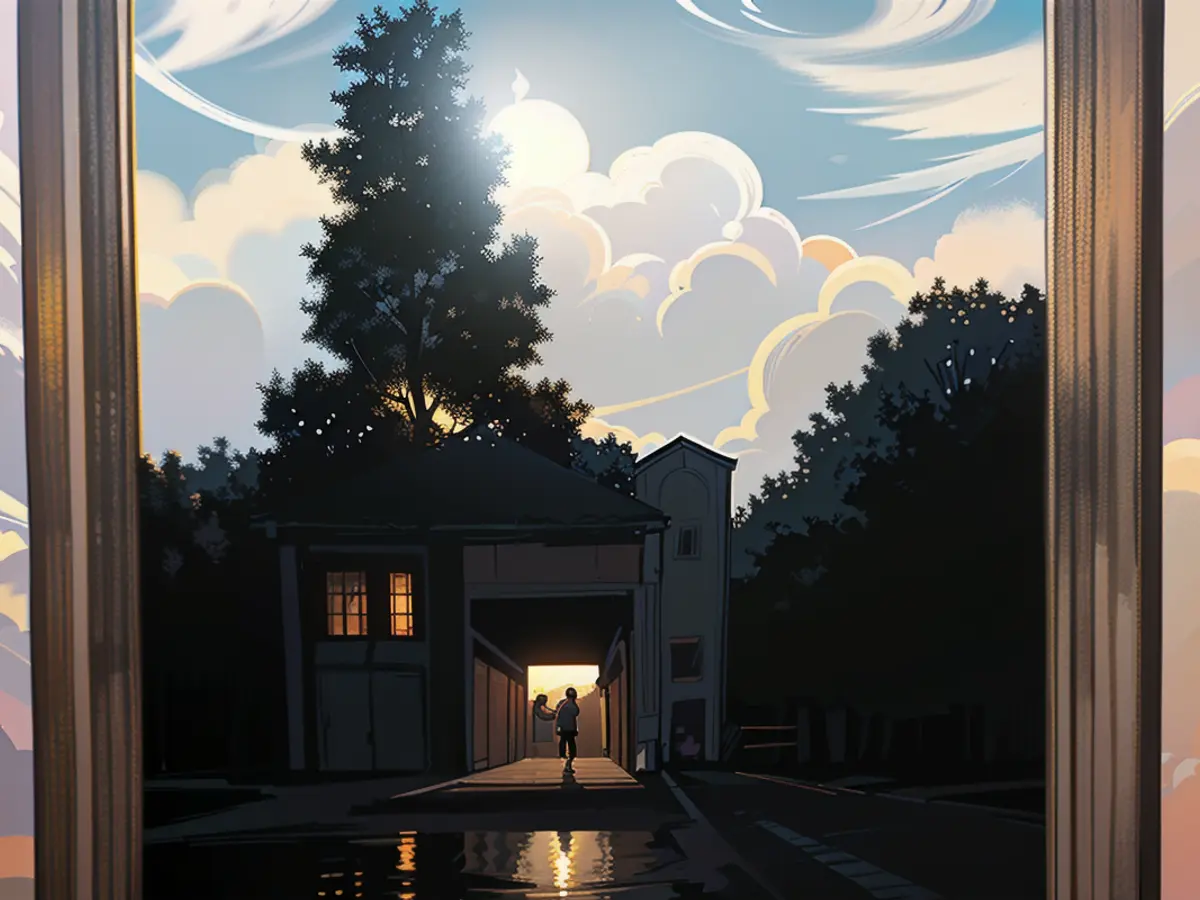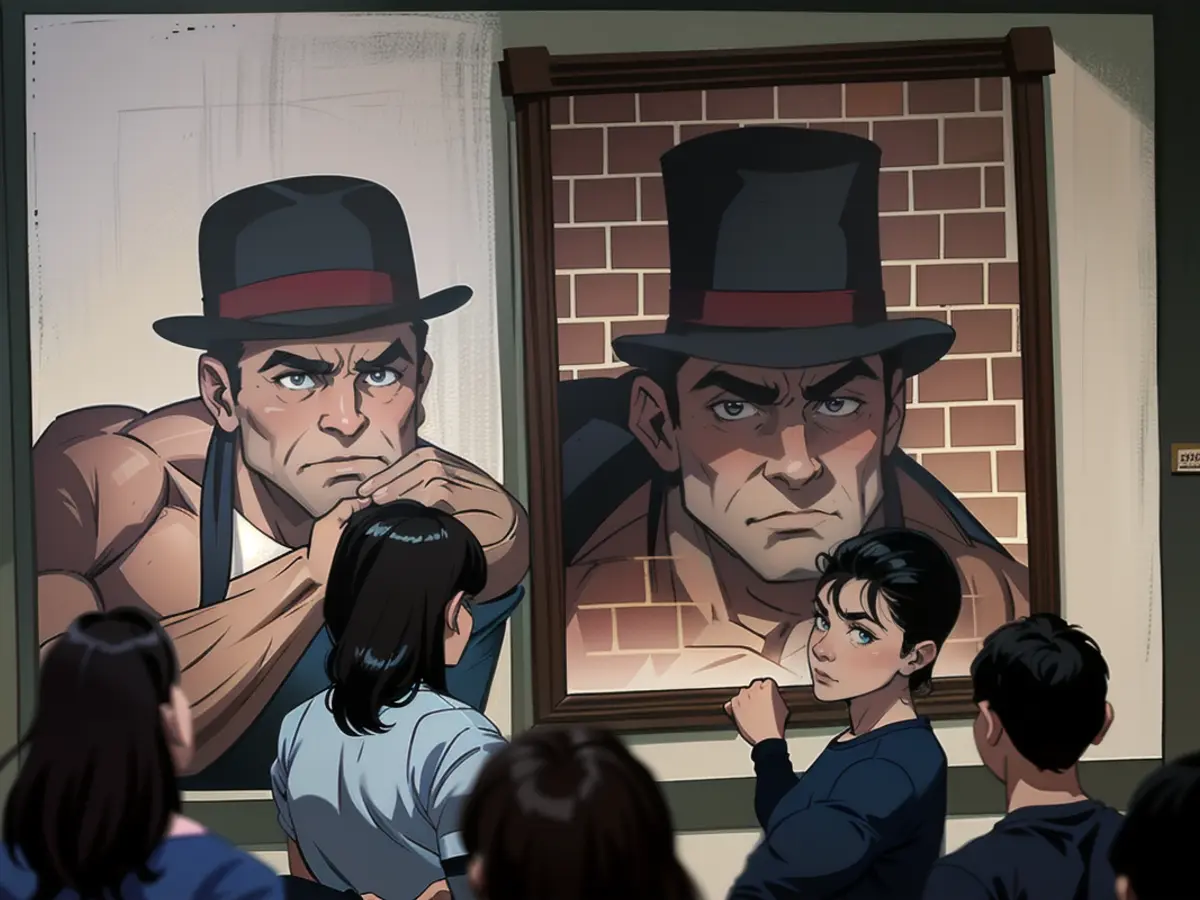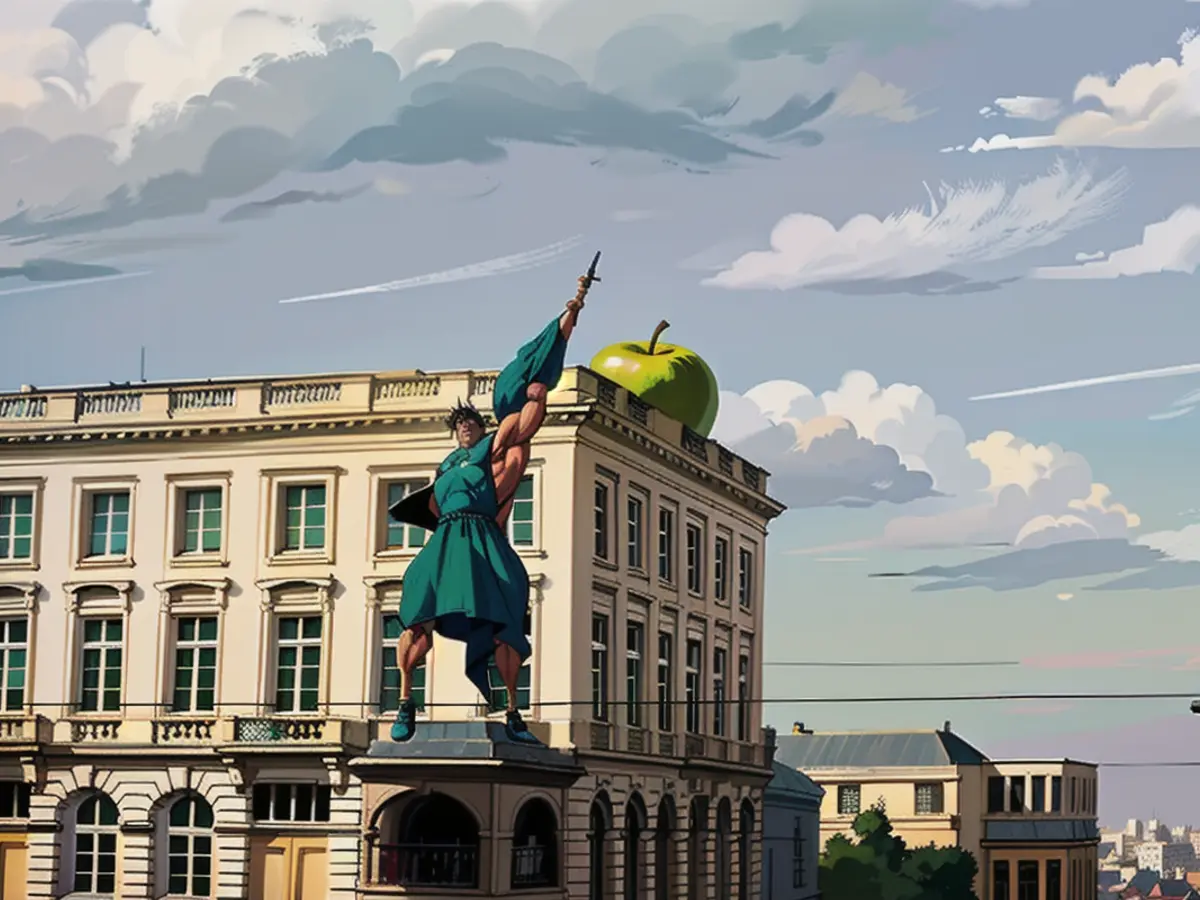Escape the insanity of reality through Magritte's art.
The city of Brussels is buzzing, celebrating 100 years of Surrealism. Journeying into the enigmatic realms of artists like René Magritte and his contemporaries, you'll find a myriad of exhibitions, showcasing the surreal beyond our everyday lives.
Night-time scenes play out, with trees casting peculiar shadows, lights gleaming through windows, a lantern aglow against a puddle's reflection. At first glance, it feels pedestrian. However, it's not. The sky above is daytime, dotted with fluffy clouds. Was this eerie landscape fashioned by some otherworldly AI?
No, this captivating image was created in 1954 and is a classic piece by Magritte. Known for his tricks on the mind, this Belgian painter, born in 1889, continues to leave us spellbound 57 years after his passing. Even his Night-Day artwork, now on display at the Royal Academy of Fine Arts, will tour several cities worldwide - Madrid, Paris, Hamburg, and Philadelphia - in the coming years.
As Brussels marks the centenary of Surrealism, numerous exhibitions unveil the surreal in unexpected places. Intrigued by Magritte and his ilk's imagination? Look no further! Packed museum halls across the city invite you to immerse in their fanciful tongues.
At the Royal Museums of Fine Arts, marvel at over 130 paintings, drawings, sculptures, and collages. The artists played with reality and illusion, constantly reinventing stories and truths. Blurring lines between what's real and what's not, they opened the door to unexpected realms. Thrilled by what he's encountered, Sara Lammens, director of the royal museums, suggests, "What could be more beautiful than to be inspired by the Surrealists? We need to put fantasy back in the center of our lives and rediscover the wonder of the world around us."

The exhibition, titled "Imagine! 100 Years of International Surrealism," bundles captivating works from different artists and chronicles the journey through various themes. From darkness to light, from forests to the human body, exploring metamorphoses, myths, and even the cosmos, dreams come alive. These timeless masterpieces, defying societal norms, are a sensational escape from the chaos of reality.
In the Royal Academy of Fine Arts, traditional paintings, drawings, sculptures, and collages are on display, each piece challenging the eye's perception. The Surrealists envisioned an alternate reality with minimal digital intervention. No AI needed to create their dreams. In their time, before social media, they crafted unexpected art by combining images manually through collages and scissors.
"Where is the green apple?"
Metamorphosing the everyday world, the Surrealists helped redefine imagination. This daring exploration of art begs the question - how much of our environment is surreal if we just let our imaginations run wild? The giant green apple, occupying the rooftop of the Magritte Museum like an art installation, is now gone.

At the Bozar, another exhibition venue, viewers are guided through a labyrinth of gridded shelves, which appear to float due to clever mirror optics. Here, works of Belgian Surrealism are showcased, offering a glimpse into the movement's uniqueness. Founded in Paris by André Breton in 1924 with a groundbreaking manifesto, Belgian Surrealism rose from the energies of Paul Nougé, who wrote another manifesto weeks later. And in contrast to their Parisian counterparts, Belgian Surrealists were political.
"Histoire de ne pas rire. Surrealism in Belgium" critically attended to the bourgeoisie and church's societal norms. Nude female bodies became their tools to shock the populace. Xavier Cannone, curator, explains, "November, a communist since the end of World War I, wanted to change society with his manifesto." This avant-garde approach chose sexuality and nudity to recondition the public mindset and empower women, who held critical roles in politics and as writers.
Georgette Magritte, for example, provided for her family as her husband's artistic pursuits didn't earn much, revealing the gender dynamics of the time. As this captivating art movement continues to intrigue us, it's fascinating to see the artists' perspectives, particularly their female gaze on the world. In these Brussels exhibitions, the women are given space to share their thoughts and further illuminate the surreal.
Surrealist artists like Magritte and his contemporaries painted in a naturalistic, almost childlike way, but with a hidden agenda of inciting confusion. They explored contrasts such as day and night, big and small, defying the laws of gravity. Massive rock formations float in rooms like dust particles. The focus is on poetry, not physics; the tension between near and far, narrowness and vastness; and the potential to reinterpret everything. Apples, birds, melon hats, blue sky, and brick buildings recur, forming a universal lexicon.

Consider "The Treachery of Images" by Magritte, a painting featuring a pipe with the caption, "This is not a pipe!" At first glance, it seems like a standard representation of a pipe, but the caption incites the viewer to reconsider what they're seeing. Is it truly a pipe, or just a depiction of one?
Similarly, surrealist artists experimented with obscuring the line between reality and illusion, between the commonplace and the uncommonplace. They crafted phantasmagoric, dreamlike realms that tested the viewer's perception and comprehension of reality. One of the most notable examples is Magritte's painting with the caption "This is not a pipe!" - an apparent depiction of a pipe - challenging the viewer to question what they were actually witnessing. Is it genuinely a pipe, or just an illustration of one?
In addition, surrealism often employed mundane objects in unanticipated ways to create a sense of disorientation and astonishment. They blended elements from various realms - the natural world and the man-made world - to generate novel meanings and connections. This was a means of exploring the subconscious mind and the illogical parts of human experience.
Surrealism also had a strong political component. Many surrealist artists were actively involved in left-wing political movements, and their art frequently expressed their political viewpoints. They employed their work to criticize society and question the established order. For example, they used nudity to shock the audience and undermine moral conventions of the time. They likewise utilized their art to probe the relationship between the individual and the collective, and to confront the role of the artist in society.

In the end, surrealism was a movement aiming to reframe our perception of the world and to open new avenues for understanding and encountering it. It was a means of exploring the imagination and the subconscious mind, and of expanding the boundaries of artistic expression.
In context of vocabulary, Magritte emphasized the relationship between word and image. "This is not a pipe" was painted beneath a pictured pipe, and it's not hard to understand why - a painted pipe is not, in reality, a pipe. Photographs in Magritte's home evoked laughter from visitors. Indeed, humor played a significant role in the Belgian Surrealist group. As Cannone tells us, "Humor was for them like an instrument. With which they provoked responses and tried to dismantle existing structures."
By the early 50s, Magritte managed to find a gallery. He would paint at regular hours, presenting himself as a petite-bourgeois, just like the people in his paintings. His modest home and studio in the Schaarbeek district, where he passed away from stomach cancer in 1967, is a must-visit.
Navigating the surrealist exhibits in Brussels' museums can induce a swirling sensation. Yet, the entry into this imagined world teeming with mental challenges is worth it. Surrealism aims at the subconscious and the mysterious, bewildering, yet enlightening, and an abundance of inspiration.

"IMAGINE! 100 Years of Surrealism" at the Royal Museums of Fine Arts"Histoire de ne pas rire. Surrealism in Belgium" at Bozar, and at the Magritte Museum 1
Read also:
- Floods: water levels remain critical in many places
- Snow chaos further restricts Bavaria
- Continuous operation in the flood areas
- Flood situation remains tense in many places
In the coming years, Magritte's "Night-Day" artwork will travel to various international cities for exhibitions, including Madrid, Paris, Hamburg, and Philadelphia. The current exhibitions in Brussels also showcase the surreal beyond our everyday lives, inviting visitors to immerse themselves in the fanciful tongues of Magritte and his contemporaries.
Source: www.ntv.de






